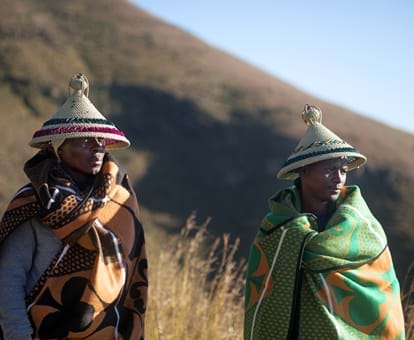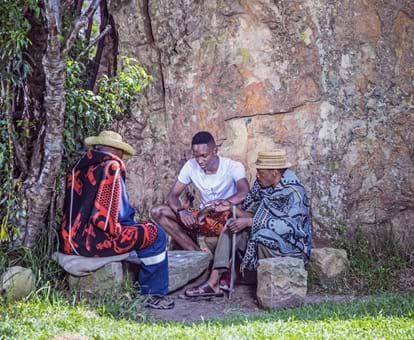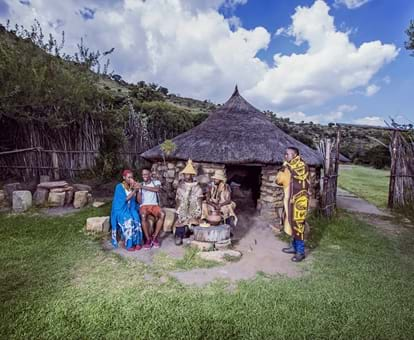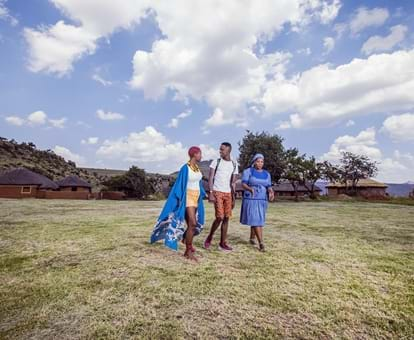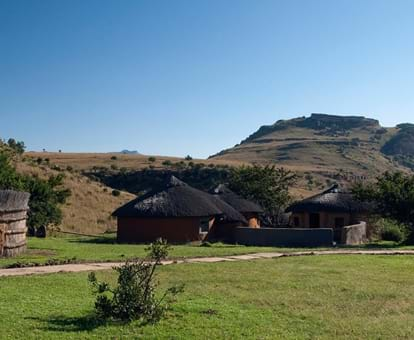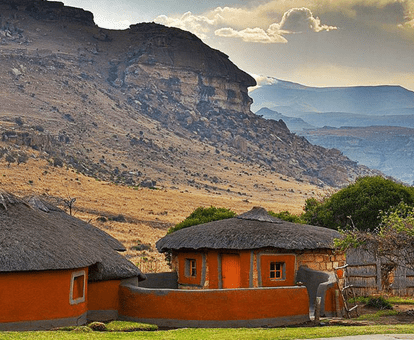By creating an account, I agree to the
Terms of service and Privacy policy
Choose your country and language:
Africa
Americas
Asia Pacific
Europe
AAs a nation that boasts about its rich culture, the Basotho can trace their origins to the pre-historic age. The Basotho, also known as Sotho speakers, are said to have originated from the north of Southern Africa. The Basotho made their way down as various tribes settled in different parts of the country. Some groups settled in the west, while others settled in the east and further south. Today these diverse groups are respectively known as the Batswana, BaPedi and Basotho tribes.
The Basotho associate and identify themselves through the use of their clan names, which specify their ancestral origins; namely the Bataung, Basia, Bafokeng, Makgolokoe and Bakuena et al. The royal family of Lesotho is largely made up of Bakuena.
Up until 1822, these tribes lived together in peace until they were invaded by fugitive Nguni who had fled from Natal. This was followed by an era of political unrest where tribes were divided and spread across different lands. The Tlokoa tribe followed the Manthaisi, and other tribes followed the Sebetoane. These tribes suffered great losses under the attacks of armies led by Shaka and Mzilikazi. Numerous tribes followed Moshoeshoe and headed further south into the country, seeking refuge at the unconquerable Thaba-Bosiu. Moshoeshoe accepted all those who had survived the attacks and was able to build the Basotho nation as we know it today. His rule is said to, at one time, have extended from modern-day Lesotho to all of the Free State.
BBasotho’s oral history can be found deep rooted in their usage of totems or family odes Liboko, praise song or poems Lithoko and storytelling Litsomo. Liboko refers to names of families, clans or totems. In these, a clear history, philosophy and the origins of each tribal group can be found. Family odes are used to identify and differentiate one clan from the other.
Lithoko were inspired by war and battles. They were mostly focused and based on great chiefs who led their people to victory during battles and wars. They’re also known as praise songs, and you can find within them descriptions of the origins, historical events and even a mention of mythical belief systems.
The cattle-raid praise poem about Moshoeshoe, a poem that has come to be well known, talks about the battle between Moshoeshoe and Monaheng where Moshoeshoe used skill and wit to undermine Monaheng.
Litsomo were traditionally told by grandmothers to their grandchildren during the evening while they sat around a fire. These stories were used as an educational tool to guide young children and warn them about things that they had to stay away from or be aware of.
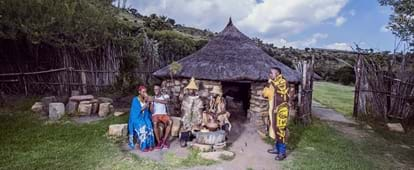
TTraditionally the Basotho had different ways of dressing, depending on the age of an individual and or the occasion. Traditionally young girls would be dressed in a neckpiece made out of clay beads known as sefaha sa letsopa and a dress made out of clay beads known as thethana ea banana. Following the coming of age, a skirt would be made out of woven fibre or a cow skin skirt known as mose oa lekoko. Young boys would be dressed in tseha, an under garment made out of sheep skin cut in a triangular shape and tied around the body in such a way as to cover the private parts. With age this garment would be lengthened to cover more of the legs. Men also used to adorn blankets made out of animal skin. For chiefs, this blanket was made out of skins of wild cats or a leopard known as lehlosi. Other blankets worn by men included setipe and mokhahla.
Basotho are also known for their head gear. The majority of this head gear is made out of straw and leaves while a few are made from animal skins. Most commonly known of these is the mokorotlo. This is a conical-shaped hat made out of a grass named moseha. Its shape is said to have been copied from that of Qiloane Mountain which is located next to Thaba Bosiu in Lesotho. Other forms of head gear include moliha-nyeoe and ts’ets’e. Hats that were made from animal skin include kuoane, kharetsana and sekola, with sekola traditionally being worn by warriors.
Initiation school used to play a big role in the life and growth of young adults within the tradition of Basotho. Attending initiation school marked a coming of age for both males and females. It was a rite of passage that everyone had to go through. It is at these schools that girls and boys were taught how to be contributing members of society. The boys were taught endurance and courage while girls were taught how to take care of a household. It is at initiation school that boys became men and girls became women.
The Basotho largely relied on agriculture and animal husbandry for their food supply. Men and boys would tend to the animals and their wellbeing while women worked the fields and collected water from springs.
TThe Basotho diet consisted of a variety of foods such as maize, millet, melons, pumpkins, peas, beans and ground nuts. The principle domestic animals included sheep, goats, fowl and cattle with cattle being the most sought after animal. Wild berries and other wild fruits that were found seasonally came as a welcome variation to their diets. Traditional alcohol, known simply as jwala, played an important role in the Basotho culture, especially during traditional ceremonies.
Basotho had a way of life that was considered to be simple and lacked complication. It is during a closer inspection that the complexities of their social and political structures can be seen and understood. The role that each individual played in the building of not just their immediate family, but the whole village and society cannot be taken for granted. The elderly would gather around children of the village and share stories that were steeped in myth and magic as a way of educating them. Great warriors and wars had praise songs that depicted the battle scene and the events that happened as a way of documentation and each clan would declare its own praises that spoke of their origin.
The advent of the missionaries and in later years, modernity, brought about changes in most aspects of Basotho culture. The majority of the traditional ways of conducting things still remain today while some aspects have been abandoned or altered over the years. In all of this, the Basotho are still known as a nation of peace, a legacy that their founder Moshoeshoe has left them, and one that will be carried down for generations to come.

AAbout the author
During the day Libe Mohale wears the hat of PR director at his agency Fun and Class Relations and part-time Marketing and Brand Building lecturer at Open Window School. His true passion is Basotho culture and community development, which is why he’s been named one of Vodacom Lesotho’s brand ambassadors. His family is from Mohale’s Hoek in Lesotho where his grandfather was chief. He is actively involved in charity projects such as supporting the orphanage St Cecilia in Lesotho. For the past five years he has hosted charity events for his birthday in Lesotho.

|Terms and conditions|Disclaimer|Privacy policy|Terms and Conditions-Valentines Campaign
